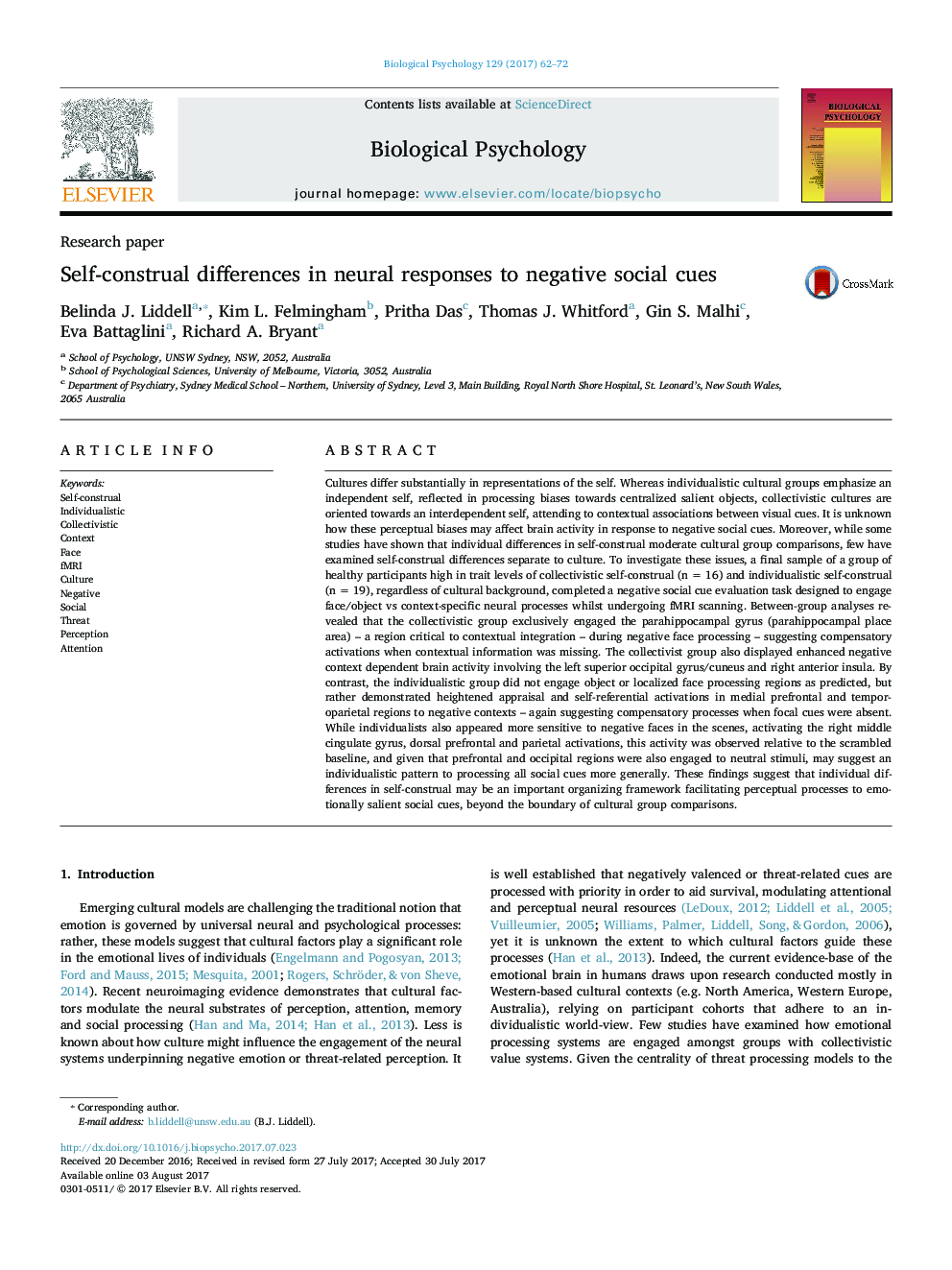| کد مقاله | کد نشریه | سال انتشار | مقاله انگلیسی | نسخه تمام متن |
|---|---|---|---|---|
| 5040342 | 1473845 | 2017 | 11 صفحه PDF | دانلود رایگان |
- Individual differences in self-construal modulate brain responses to social threat.
- Collectivists engaged the parahippocampal gyrus to negative faces.
- Collectivists also evidenced more context-dependent neural activity.
- Individualists activated appraisal and self-focus regions to negative contexts.
- Self-construal may be an organizing framework for emotion processing in the brain.
Cultures differ substantially in representations of the self. Whereas individualistic cultural groups emphasize an independent self, reflected in processing biases towards centralized salient objects, collectivistic cultures are oriented towards an interdependent self, attending to contextual associations between visual cues. It is unknown how these perceptual biases may affect brain activity in response to negative social cues. Moreover, while some studies have shown that individual differences in self-construal moderate cultural group comparisons, few have examined self-construal differences separate to culture. To investigate these issues, a final sample of a group of healthy participants high in trait levels of collectivistic self-construal (n = 16) and individualistic self-construal (n = 19), regardless of cultural background, completed a negative social cue evaluation task designed to engage face/object vs context-specific neural processes whilst undergoing fMRI scanning. Between-group analyses revealed that the collectivistic group exclusively engaged the parahippocampal gyrus (parahippocampal place area) - a region critical to contextual integration - during negative face processing - suggesting compensatory activations when contextual information was missing. The collectivist group also displayed enhanced negative context dependent brain activity involving the left superior occipital gyrus/cuneus and right anterior insula. By contrast, the individualistic group did not engage object or localized face processing regions as predicted, but rather demonstrated heightened appraisal and self-referential activations in medial prefrontal and temporoparietal regions to negative contexts - again suggesting compensatory processes when focal cues were absent. While individualists also appeared more sensitive to negative faces in the scenes, activating the right middle cingulate gyrus, dorsal prefrontal and parietal activations, this activity was observed relative to the scrambled baseline, and given that prefrontal and occipital regions were also engaged to neutral stimuli, may suggest an individualistic pattern to processing all social cues more generally. These findings suggest that individual differences in self-construal may be an important organizing framework facilitating perceptual processes to emotionally salient social cues, beyond the boundary of cultural group comparisons.
Journal: Biological Psychology - Volume 129, October 2017, Pages 62-72
